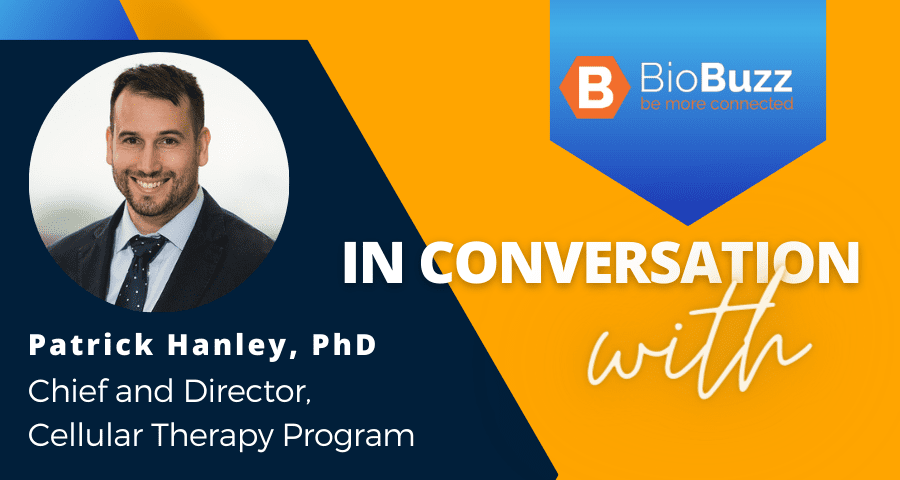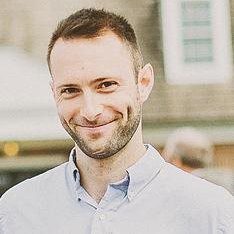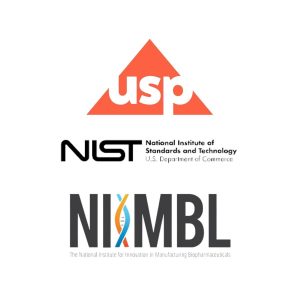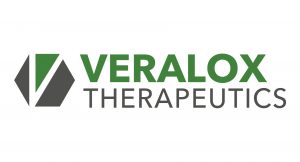
In Conversation with Patrick Hanley, Chief & Director of the Cellular Therapy Program, Children’s National Hospital
By Sam Hopkins | September 20, 2023
| This article is part of our In Conversation series, one of our ongoing People & Places Features. Go indepth with some of the most interesting people making impact across BioBuzz’s growing biohubs. |
We recently chatted with Dr. Patrick Hanley, Chief and Director of the Cellular Therapy Program at Children’s National Hospital in Washington, DC, to discuss how connections catalyze the flow of information and innovation in the life sciences, and the role he and Children’s National play in catalyzing regional innovation that benefits patients worldwide.
Hanley also serves as associate professor of pediatrics in the Center for Cancer and Immunology research at the Children’s National Research Institute and member of the Center for Cancer and Blood Disorders and the Division of Blood and Marrow Transplantation. His leadership roles afford him a broad overview of what’s happening in the region.
When it comes to innovation, Hanley says that comes from people with boots on the ground.
“It’s the people doing this work day in and day out who say, ‘Hey, we noticed that in the products that seem to fail, there are more red blood cells, or it looks bloodier,’ then we can look at the data, say, ‘You’re right!’ and make modifications. Some of our best changes have happened because of that.” As a leading expert in good manufacturing practices (GMP), Hanley is always thinking about the balance between stringent standards and pushing things forward in line with new technology. He says one of his colleagues even jokes about the constant quest to take things to the next level, asking, “What about great manufacturing practices?”
Capital Innovation
Hanley got started in his career with cell manufacturing at the Baylor College of Medicine in Texas. From there, he learned how to run the facility for two years as a postdoc. Then, he had the opportunity to come to Children’s National in 2013, to found its first GMP facility. Fast forward ten years, and they have manufactured more than 550 products for patients, treating over 315 patients with those investigational new drug cell therapy products.
The BioHealth Capital Region has a unique and fundamental strength in its federally funded basic research, and the entrepreneurial and investment activity to advance those institutional insights to the patient bedside remains a key challenge and effort. “Real innovation is happening in the region,” Hanley says, and he is working to connect the dots. Namely, he’s working to match emerging talent to the companies that need it.
“From the university perspective or from community colleges, if you’re working on training a workforce, or if you want to develop a training program for cell therapy, that’s good because we want to have a pipeline. Whether it be Children’s National or Kite Pharma, or whoever, hopefully there will be jobs available and we can all be associated with this pipeline.”
Connecting for Progress
Dr. Hanley is a speaker at the BioHealth Capital Region Forum this September in Rockville, and he has worked to make sure that cellular therapy is well understood and well supported when it comes to regulation and workforce development. He is also passionate about advancing innovation in manufacturing processes, with an eye to expanded access for patients and greater training opportunities for students and emerging innovators within the industry. Hanley himself is co-chair of the Early Stage Professionals group of the International Society for Cellular Therapy.
Dr. Hanley will inform the audience at the upcoming Maryland Bio Innovation Conference on October 30, where he will be a panelist on the topic, Immunotherapies: Unleashing Promise Outside of Oncology. Hanley will join leaders from Vaccitech and AstraZeneca, among others, to advance the discussion there live in Bethesda.
Building Capacity
As home to JLABS, Johnson & Johnson’s innovation facility, Children’s National is moving to develop its own innovative GMP manufacturing capacity, Hanley says, and tie-ins with institutions like Virginia Tech and its Corporate Research Center are strengthening connections and clarifying paths forward for life science companies in the region. VTRTC kicked off a virtual residency program with JLabs this spring, helping to shorten the distance between Blacksburg and D.C. for the benefit of three selected startups.
In November, Dr. Hanley will speak at the Cell Therapy Symposium, an invitation-only conference for top innovators in the field, and he recently hosted a Cellular Biomanufacturing Workshop at the Children’s National Research & Innovation Campus. He invites people to reach out to him if they want a seat at the table, or if they want to share the exciting work they’re doing.
- About the Author
- Latest Posts
Sam Hopkins has spent the past decade in the Baltimore area life-science and healthcare ecosystem, including roles at Johns Hopkins, the University of Maryland, the U.S. Army, and early-stage companies. He spent the previous decade as a journalist, which saw him cover everything from clean energy conferences in Morocco, to Soviet-era Estonian rock’n’roll, to trailblazing CEOs in Timonium. Sam is an avid athlete and coach, and he lives with his wife and two sons in Baltimore’s Oakenshawe neighborhood. You can often find him around town spinning records as DJ Balagan, or performing in musical groups Sink and South of Boundary.








